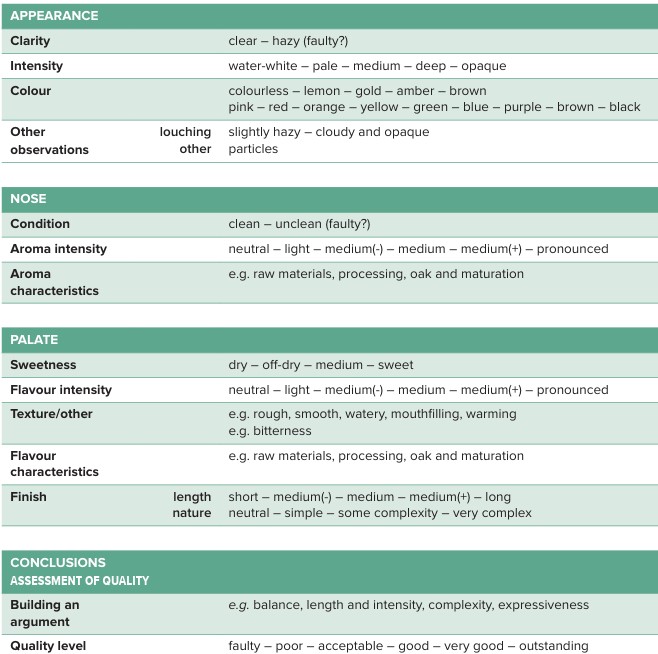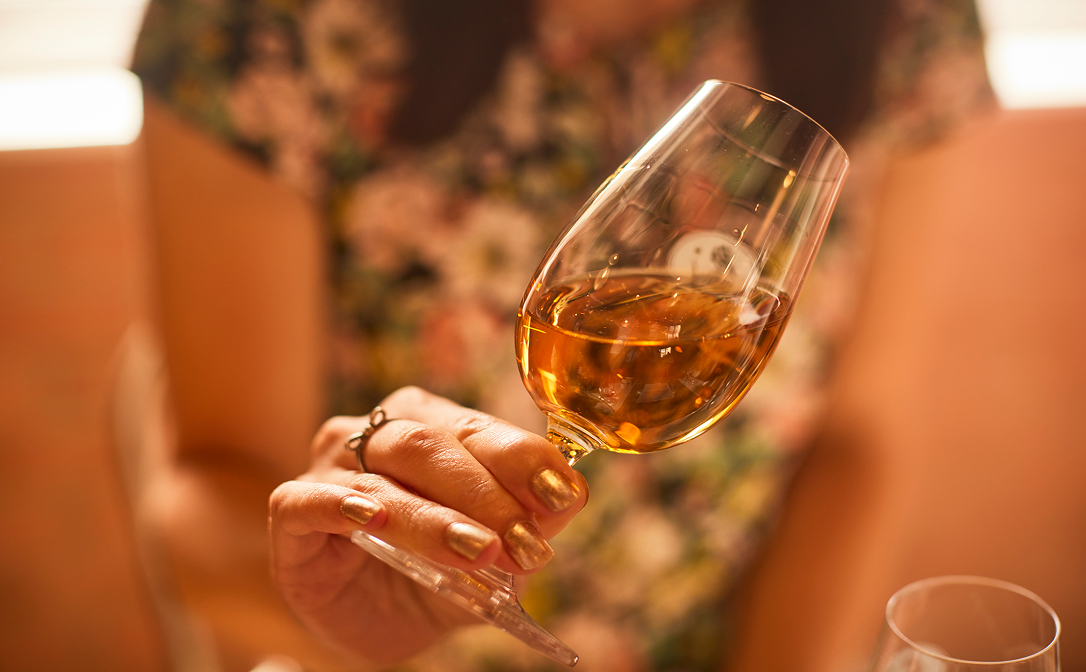The WSET Level 3 Award in Spirits is our most advanced-level qualification in spirits, and teaches students to confidently explain why various spirits look and taste the way they do. Unit one provides a detailed understanding of spirits production, factors affecting the style and quality of spirits, and an overview of key spirits categories. Unit two focuses on how to taste and describe spirits, using the WSET Level 3 Systematic Approach to Tasting Spirits® (SAT) - and thus there is also a tasting component to the exam.
Nicholas King, our Head of Research and Curriculum – Spirits, is providing a guide on how to simplify your approach to the Level 3 Award in Spirits tasting exam.
Exams are unavoidably odd and the result of a convergence of various needs. On the one hand it is a need to prove knowledge and understanding and on the other a need to verify the same competences. This is further complicated when you ask why these needs exist in the first place and how these needs can be met as efficiently and as fairly as possible. This is not to say that exams are not useful and valid, but their oddness comes from the fact they are events that stand separate and apart from the everyday use of knowledge and understanding they are assessing. They are extra-ordinary.
You might think that a tasting exam fits this mould exactly, but I would argue that it is far more connected to the everyday skill it is assessing than many other exams could ever hope to be. Therefore, the best advice anyone can offer when it comes to tackling a tasting exam is to take a close look at what tasting is and the role played by the Systematic Approach to Tasting Spirits® (SAT). What is the normal and ordinary role of tasting?
Tasting spirits is a process
There are two fundamental parts to any tasting:
- A description
- An analysis
A description is a record of the sensory information you got from a spirit. This is neither easy nor intuitive. An intuitive description of a spirit would be ‘it smells and tastes like whisky’ – a perfectly normal human response – but a tasting description involves separating out the inputs from four senses, three of which (smell, taste and touch) you perceive simultaneously. This is something we all do once we become sufficiently engaged with spirits and need to find a way of communicated how one is different from another. Effective communication requires a consistent approach to description and that requires a process.
An analysis is made up of any number of questions that we can ask of a spirit based on its description.
Questions can include:
- Is it any good?
- What was it made from?
- Where was it made?
For those engaged with spirits, these are fascinating questions but that are also complex ones. Therefore, the best way to learn how to tackle them consistently and quickly is to have a way of breaking the question down into smaller and somewhat easier questions and build an answer to the big question out of these smaller parts. Yes, analysis is a process.

Click here to see the full document.
SAT: a process map
If you have ever wondered how gymnasts learn to perform incredible feats of strength and agility on the beam, then know that they didn’t start the process of learning on a hard wooden beam several feet in the air. They started on soft mats on the floor and built up their skills step by step.
Above all else, the SAT is a teaching tool that has been designed to help you navigate the process of spirits tasting effectively and efficiently. It is built in progressive steps over Levels 1, 2 and 3 and by the time you get to the Level 3 Award in Spirits, it provides you with a detailed process map to navigate the skills of description and analysis.
It is not, and has never pretended to be, the only way to negotiate these challenges, but it is a very reliable guide because it breaks both parts down into smaller easy to answer questions that can be tackled one at a time.
The questions for the descriptive parts of the SAT are sections such as colour, intensity, sweetness. They are not formulated as questions, but they are, in effect, asking you ‘What is the colour?’, ‘What is the intensity?’, ‘What are the aroma characteristics?’ Some of these questions can be answered using calibrated scales, others require more open responses.
The analytic part of the of the SAT focuses on the question ‘Is the spirt any good?’ and, in the updated version of the qualification, it has been broken down into a series of seven questions you can ask the spirit that relate to its balance and it expressiveness. Questions that will provide insights that can build into an assessment of quality.
Using a process map
Any process has rules that are baked into it to make it consistent and effective. Therefore, on a practical level if you are using the SAT during your course or in an exam you need to stick to these rules to get the best out of it:
- Use the required terminology
- Pick one entry from the hyphenated ‘calibrated’ lines
- Cover all the lines
- Describe aromas, flavours and textures in sufficient detail
- Answer the quality questions using evidence from your tasting note

Understanding a process map
Knowing that it is against the rules to pick up and carry the ball in soccer, offers no insight in how to actually play soccer effectively. The rules channel your efforts, but they do not help you to understand what you should do to be effective and why those choices are effective. For tasting, especially while you are learning, it is no different. So, what is the understanding this effort is driving you towards? There are three interrelated answers.
Sensory refinement
Methodical repetition of a task makes you better at it. Your senses adapt to repeated tasting and become better equipped at telling more and more subtle nuances apart. Nobody becomes good at tasting, or gymnastics, without practice.
Calmness
A process allows you to focus on the spirit you are tasting and cut out distractions. A surgeon stays calm during an operation by leaning into their training and the processes they know work. Similarly, in tasting you will always make progress if you focus on what you need to do rather than what you think you ought to be doing simply to get marks. The SAT is there to support you and to help you focus in on the spirit being tasted.
Reflectiveness
The unique skill we, as humans, can bring to tasting is thinking. A dog can identify aromas at levels that are orders of magnitude beyond our sensory capabilities, but, as far as we know, they do not have the capacity to ask questions of their sensory experiences such as why, what and how. You can, and if you put in the practice and rely on the process you will remain calm and clear headed enough to ask the right questions of any spirit you happen to taste.
Normalising the extra-ordinary
Therefore, if you put in the practice, learn and trust the process, any tasting in a classroom, exam room or at home or work should yield the same results. You, like anyone else, can learn to make any tasting a perfectly normal and ordinary process.
If you're about to embark on the WSET Level 3 Award in Wines tasting exam, check out our guide on how to ace that exam.


